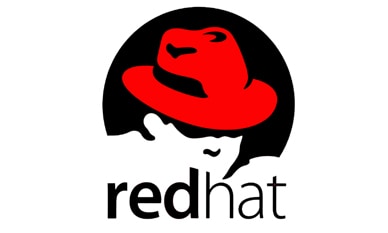
Access systems and get help
Log in to local and remote Linux systems, and investigate problem resolution methods provided through Red Hat Insights and support.
Navigate file systems
Copy, move, create, delete, and organize files while working from the bash shell.
Manage local users and groups
Create, manage, and delete local users and groups and administer local password policies.
Control access to files
Set Linux file system permissions on files and to interpret the security effects of different permission settings.
Manage SELinux security
Protect and manage the security of a server by using SELinux.
Tune system performance
Evaluate and control processes, set tuning parameters, and adjust process scheduling priorities on a Red Hat Enterprise Linux system.
Install and update software packages
Download, install, update, and manage software packages from Red Hat and yum package repositories.
Manage basic storage
Create and manage storage devices, partitions, file systems, and swap spaces from the command line.
Control services and the boot process
Control and monitor network services, system daemons, and the boot process using systemd.
Manage networking
Configure network interfaces and settings on Red Hat Enterprise Linux servers.
Analyze and store logs
Locate and accurately interpret logs of system events for troubleshooting purposes.
Implement advanced storage features
Create and manage logical volumes containing file systems and swap spaces from the command line, and configure advanced storage features with Stratis and VDO.
Schedule future tasks
Schedule tasks to automatically execute in the future.
Access network-attached storage
Access network-attached storage, using the NFS protocol.
Manage network security
Control network connections to services using the system firewall and SELinux rules.
Note: Course outline is subject to change with technology advances and as the nature of the underlying job evolves. For questions or confirmation on a specific objective or topic, please contact a training specialist online or at +1 866-626-2994.
This offering is geared toward Windows system administrators, network administrators, and other system administrators who are interested in supplementing current skills or backstopping other team members, in addition to Linux system administrators who are responsible for these tasks:
- Configuring, installing, upgrading, and maintaining Linux systems using established standards and procedures
- Providing operational support
- Managing systems for monitoring system performance and availability
- Writing and deploying scripts for task automation and system administration
You will be expected to already understand fundamental Linux computing concepts and be ready to practice the Red Hat Enterprise Linux methods for performing system administration tasks. Significant field experience working with Linux as a system administrator is recommended.
If you do not have experience with fundamental Linux computer concepts, we advise you to start with the Red Hat System Administration I (RH124) course instead.
Impact of this training
This offering is intended to develop the skills needed for basic administration and configuration of Red Hat Enterprise Linux, introducing key command line concepts and enterprise-level tools and laying the foundation for the rapid deployment of Red Hat Enterprise Linux. The curriculum also introduces the basic administration skills needed for resolving configuration issues and integrating Red Hat Enterprise Linux systems with other existing environments.
This offering establishes secure user and group administration and allows administrators to use available storage solutions more efficiently and securely. The rapid pace can quickly turn a computer professional with basic knowledge of Linux into a fully capable Linux administrator.
Red Hat has created this course in a way intended to benefit our customers, but each company and infrastructure is unique, and actual results or benefits may vary.
Impact on the individual
As a result of completing this offering, you should be able to perform essential Linux system administration tasks, including establishing network connectivity, managing physical storage, and executing basic security administration.
You should be able to demonstrate these skills:
- Access the command line locally and remotely
- Manage files from the command line
- Manage local users and groups
- Monitor and manage Linux processes
- Control services, daemons, and the boot process
- Manage tuning profiles for system performance
- Control access to files with file system permissions
- Analyze and store log files
- Configure and secure the OpenSSH service
- Install and update software packages and appstreams
- Manage Linux file systems and volumes
- Manage Linux networking and firewalls
 Print Page
Print Page